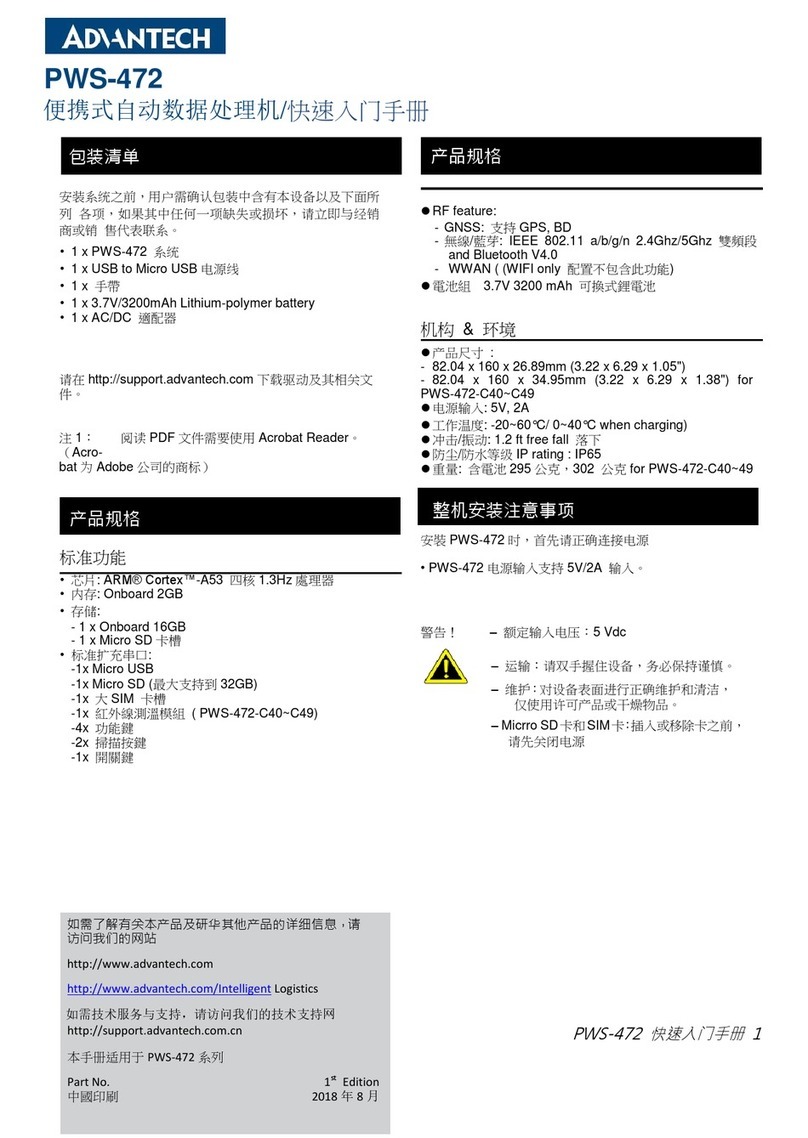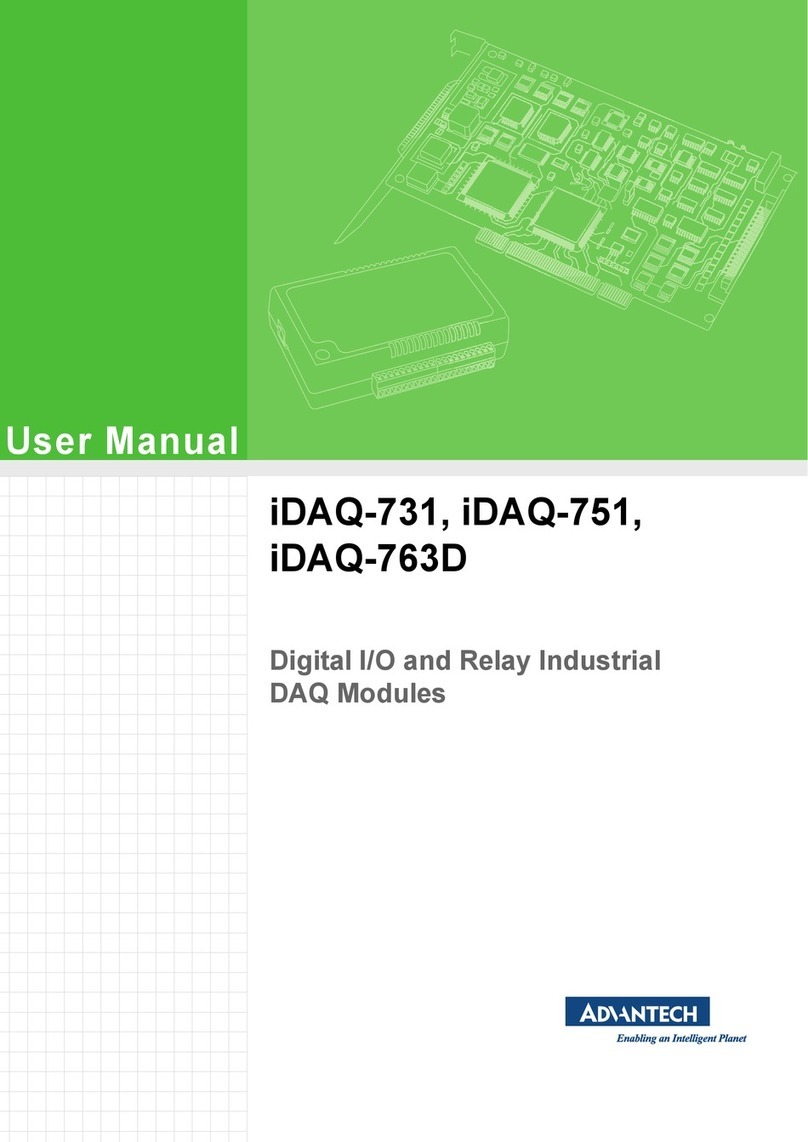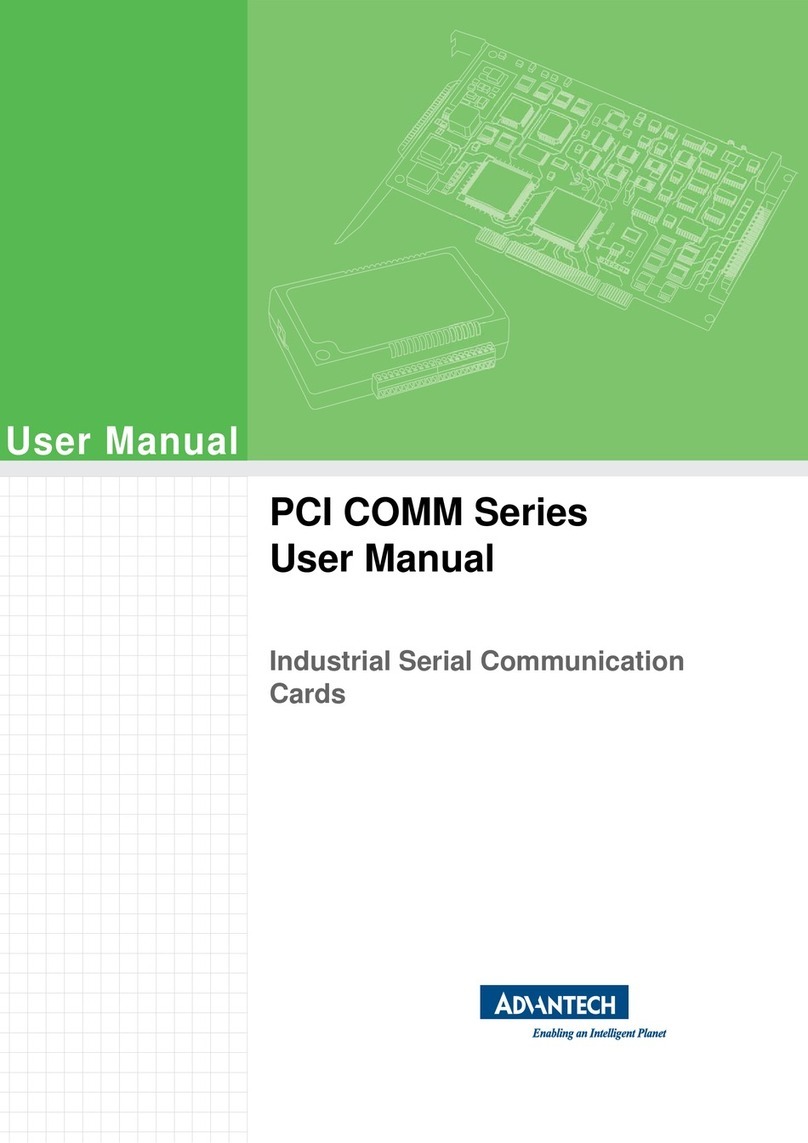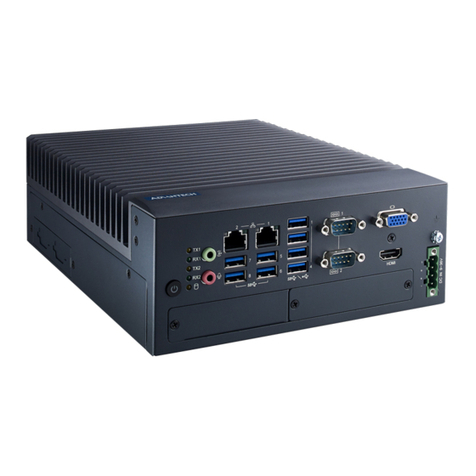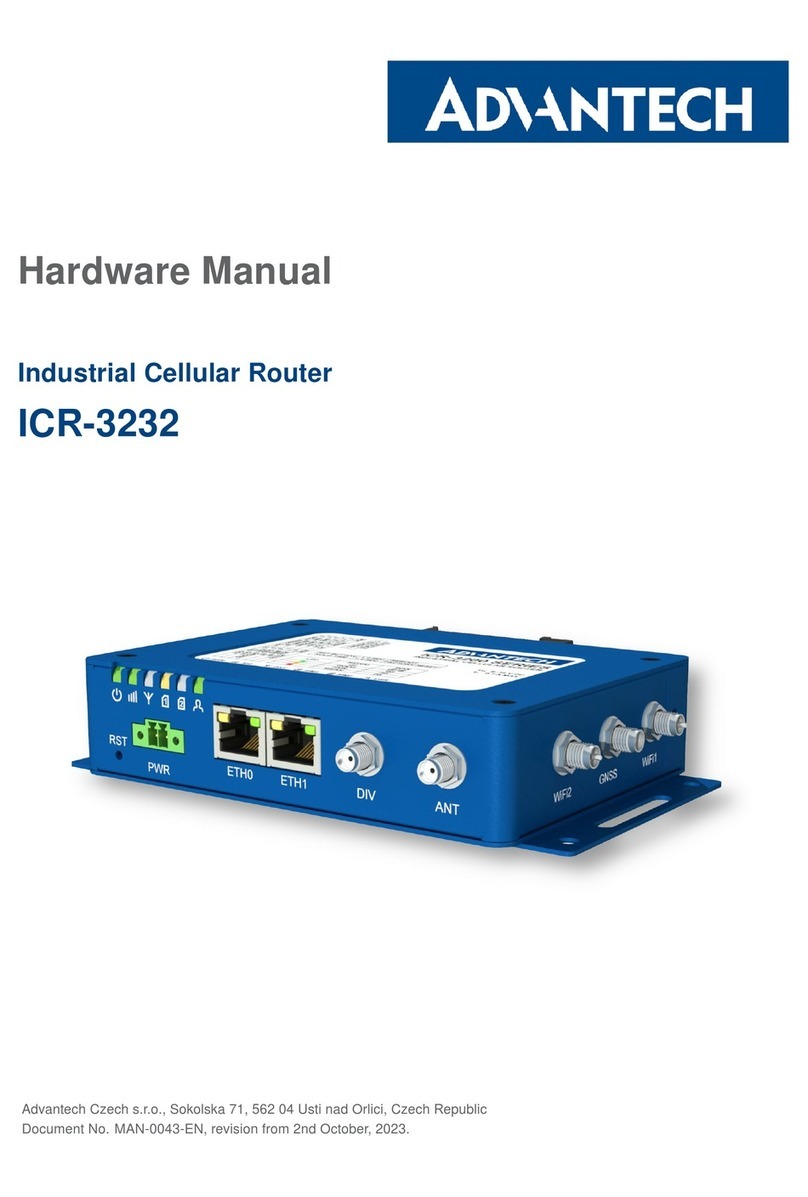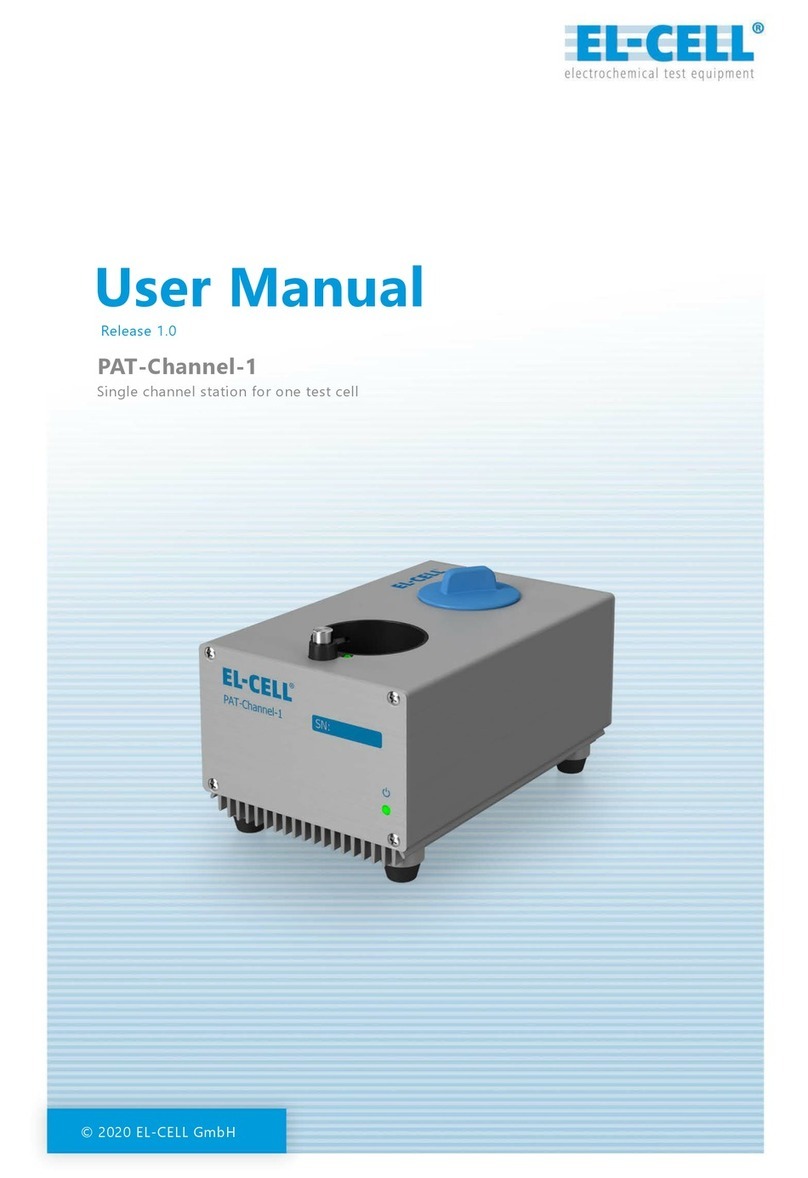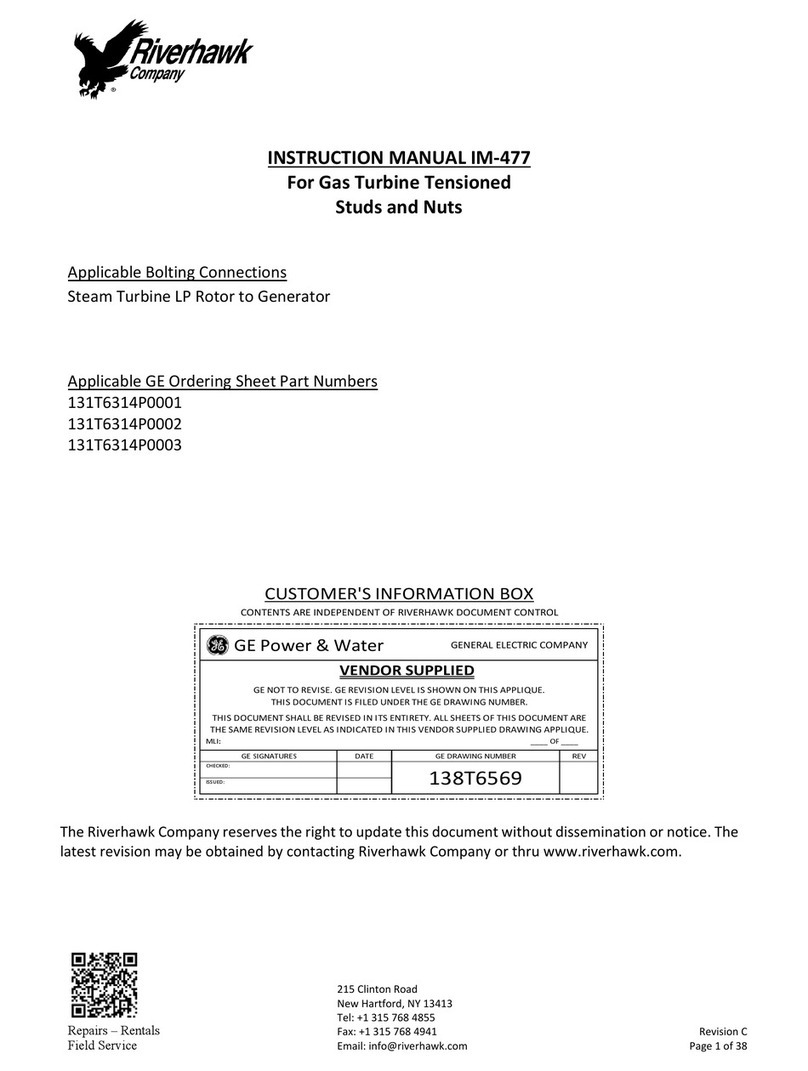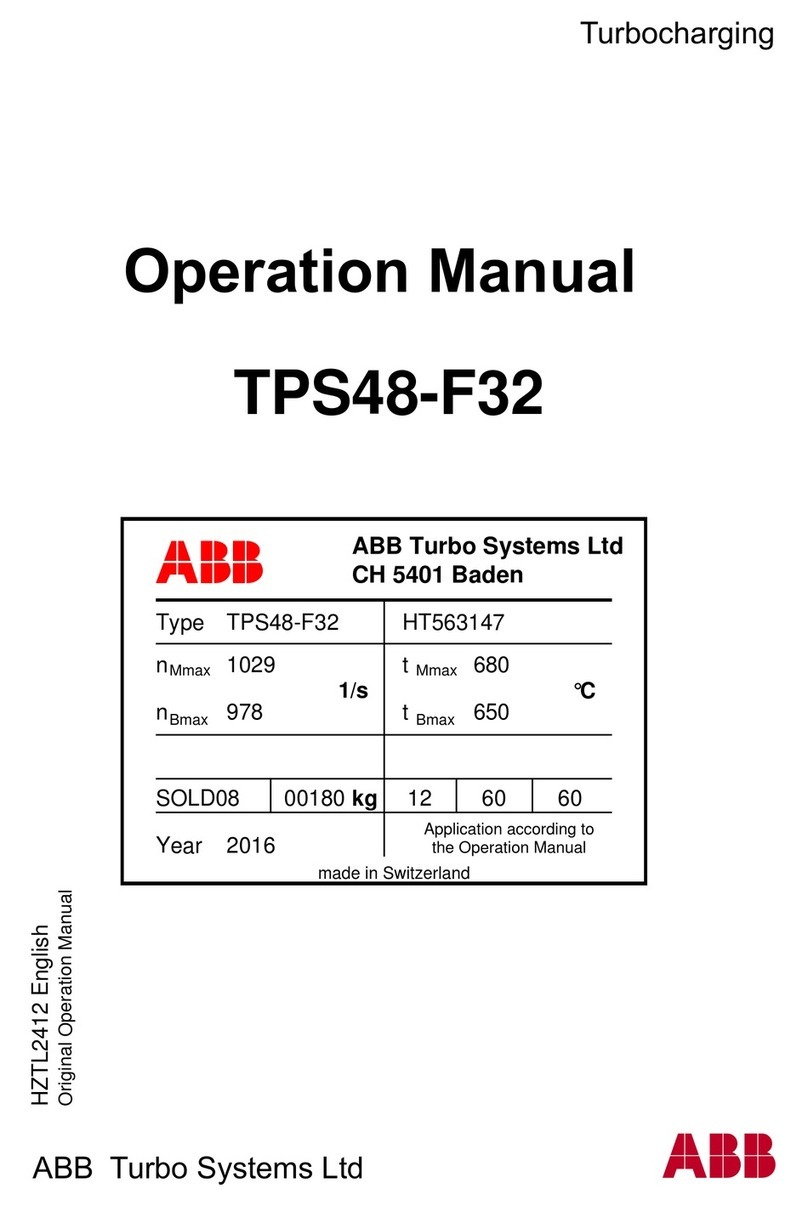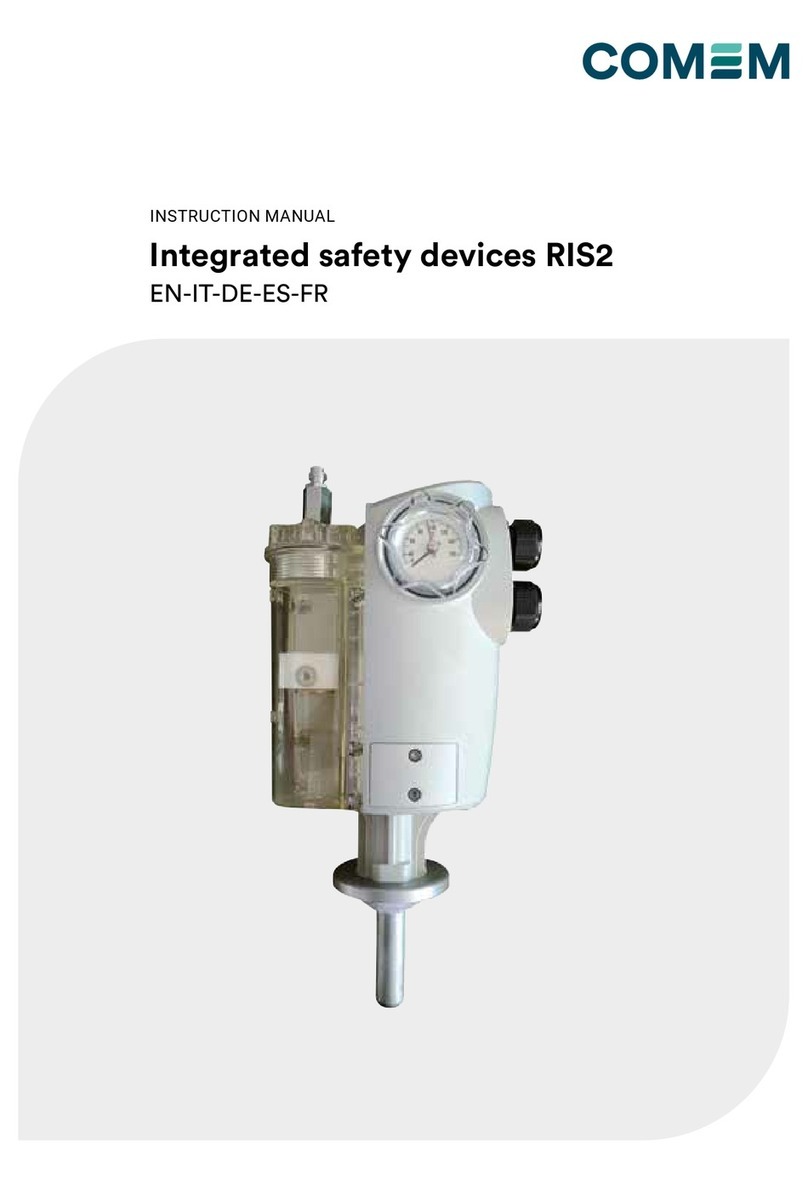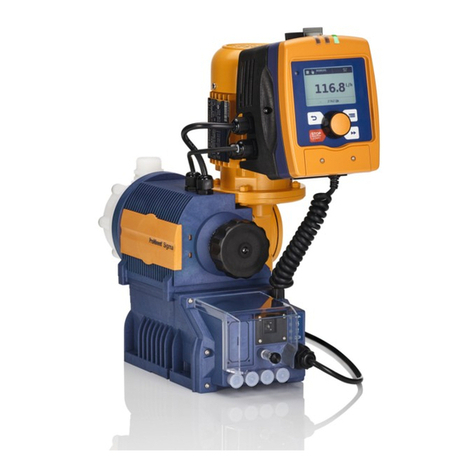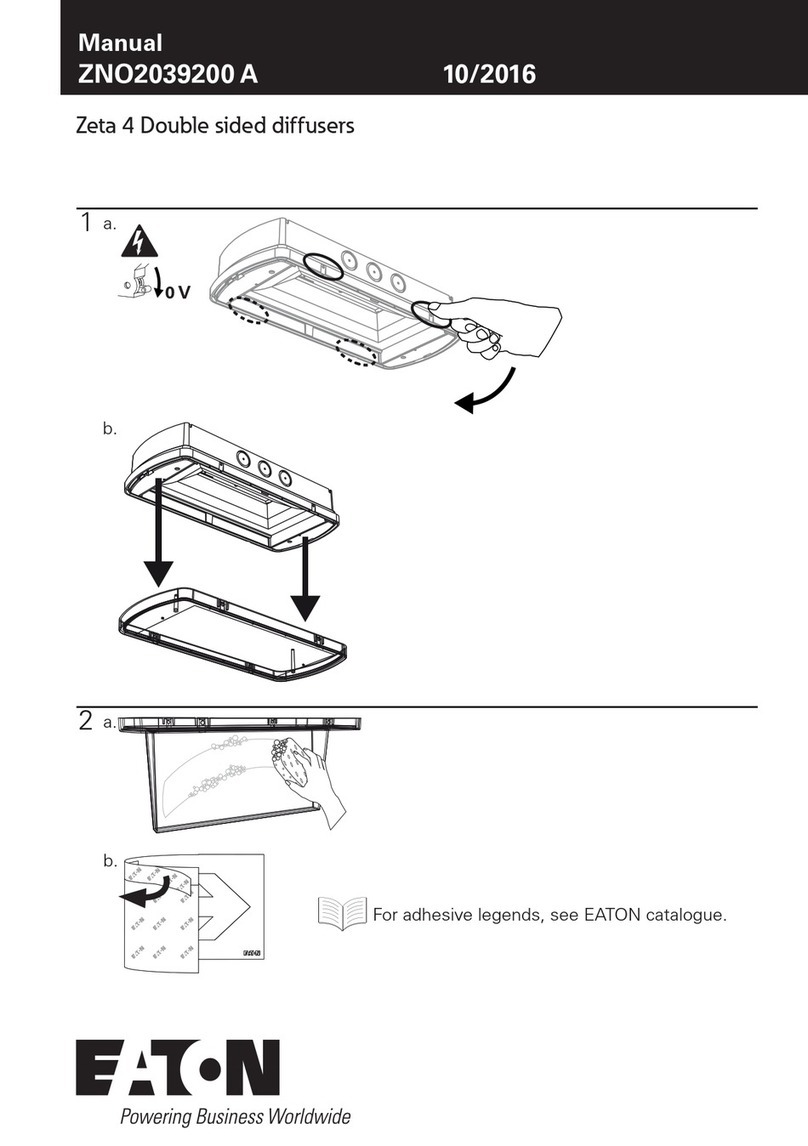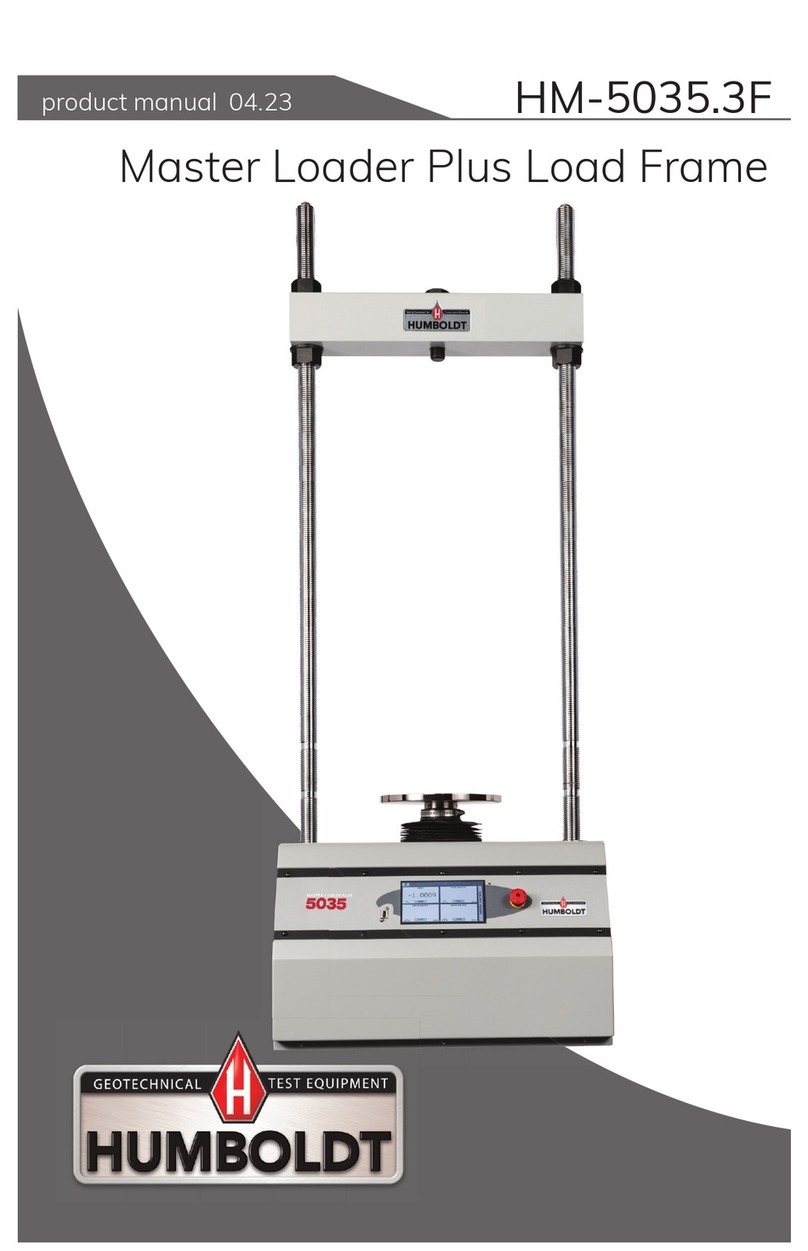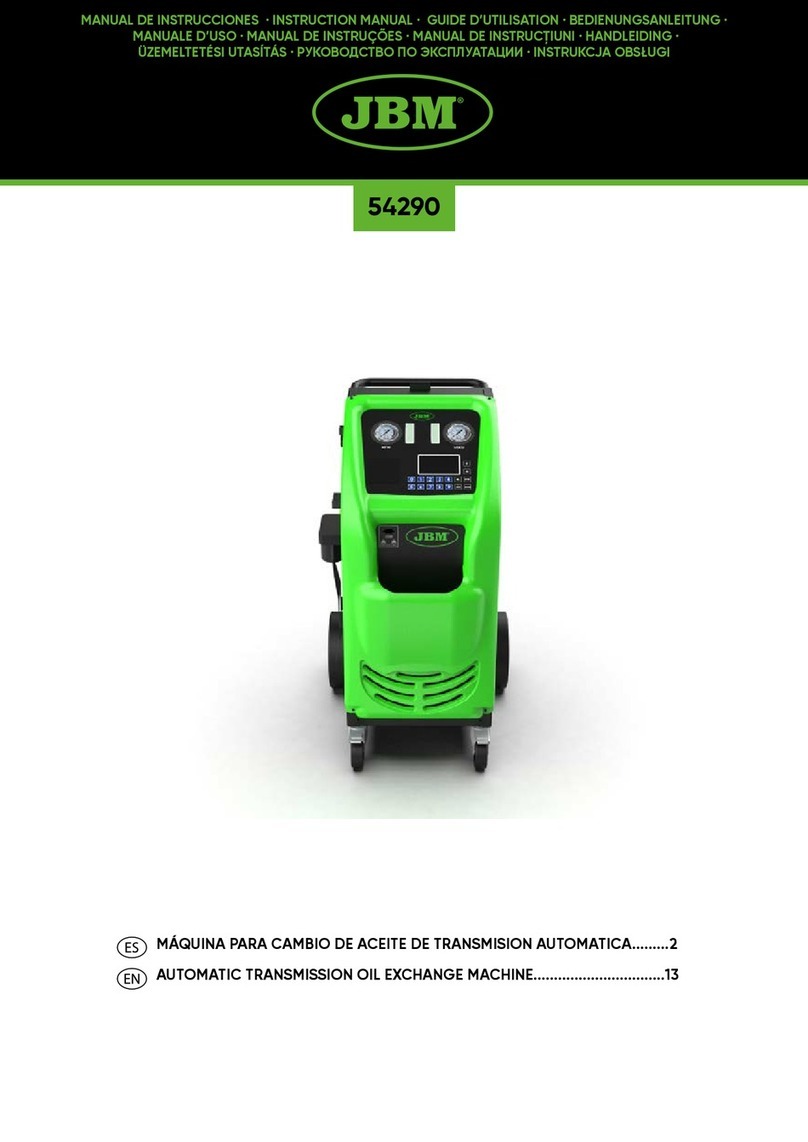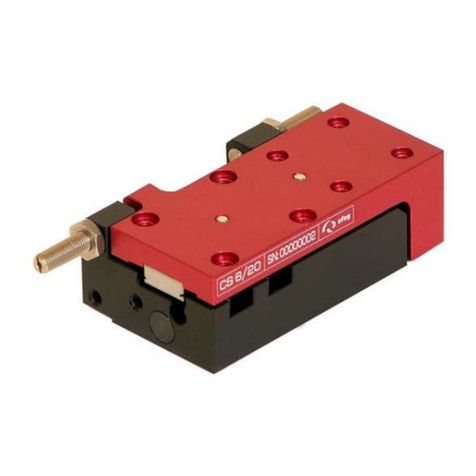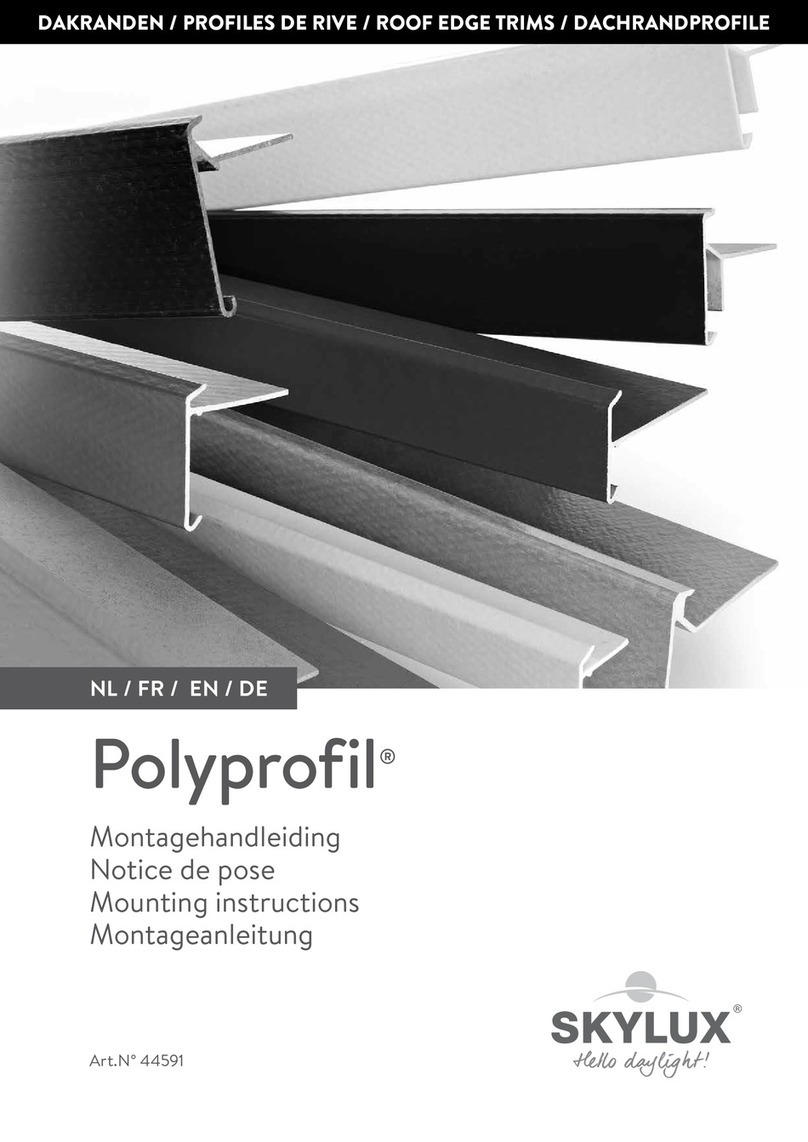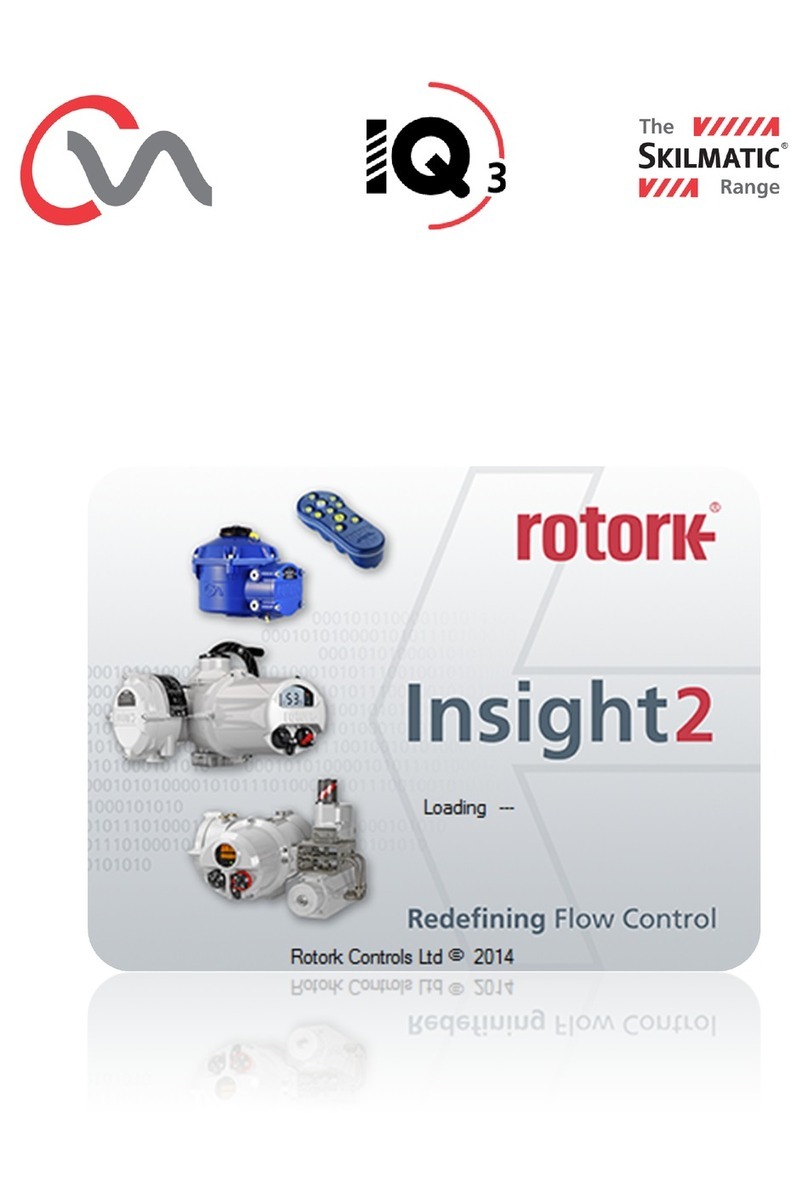Advantech VariSifter VS1000 User manual


Specifications
Thanks to the VariSifter’s™ internal converter, a single model can be used in any of
the following power environments:
120V/60Hz
120V/50Hz
240V/50Hz
240V/60Hz
Materials of Construction
Stainless Steel Test Table
Steel Cabinet and Frame
Baked Powder Finish Throughout
Acrylic Sieve Frames, Spacers, and Top Cone
Metal Column Lock
Aluminum Fines Collector Holder
Physical Dimensions
Weight…………………………………………………….. 35 lb (16 kg)
Cabinet Dimensions……………………………….. 23”h x 10”w x 12”d
……………………………………………………………..…. 61 cm x 25 cm x 31 cm
Operating Conditions
This device will function properly at any non-condensing humidity level within the
temperature limits of 0° to 120°F (18° to 49°C). However, for test repeatability, it is
recommended the ambient temperature and humidity be controlled. The sieves and
accessories used with this device should never be subjected to temperatures above
+125°F (52°C) or below –45°F (-43°C).
External vibrations of a low energy level will have little effect upon the accuracy of
the test results. For optimum results, the device should be operated on a stable,
level surface. This practice will help ensure an even layer of particles on each sieve.

Operating Instructions
Installation
Place the VariSifter™on a level surface for operation. Observe the
ambient temperature and humidity guidelines outlined in the
specifications section.
Electrical Connection
Plug the power cord into the socket in the rear of the unit and then
into the power source. The VariSifter™has an internal power
converter to accommodate various power environments. (120V/50Hz,
120V/60Hz, 220V/50Hz, 220V/60Hz)
VariSifter™Sonic Separator Control Panel
Frequency Control
Frequency (Hz) of each test may be customized from 15Hz up to 60Hz
by turning the Frequency knob (Freq) on the left side of the control
panel. A read-out of the setting will display on the touch screen both
in the analog expression and digitally. This setting will vary the
number of “tries” per second the sample particles experience.

Start/Stop
After programming the desired test time, hit the START button to
begin your test and the timer will begin to count down. The STOP
button will interrupt the test, but retain the remaining test time on the
countdown. To completely abort a test and reset the timer, press and
hold the STOP button for two seconds.
Amplitude Control
Amplitude is adjustable from 0 - 100 by turning the Amplitude knob
(Amp) on the right side of the control panel. The read-out (expressed
as a percentage of power) shows both in analog and digitally. The
amplitude will vary the intensity of the sound wave used thereby
adjusting the amount of “lift” applied to particles in the test stack. The
optimum amplitude for the sample will depend upon the density of the
particles, static electric charges, agglomeration, etc. Observing the
sample during setting the amplitude is key in achieving the optimum
amplitude for any given test. The ideal amplitude has been achieved
when the heaviest particles are rolling on the sieve surface and no
particles are arcing higher than half the height of the sieve surface.
Manual |/O Testing Screen
The |/O screen is a troubleshooting module that will be helpful in the
event of malfunctions. Advantech/W.S. Tyler telephone or email
support can assist with walking through the Manual |/O Testing Screen
buttons, if necessary.
Machine Status Indicator
“READY FOR TESTING” –Displays when the test stack is
properly in position
“TEST STACK NOT IN POSITION” –If the test stack kicks out
of position a long series of beeps will be emitted and sifting and
tapping will be interrupted
“TEST STACK SECURE” –When the test stack is properly in
place, testing is ready to proceed
“TEST IN PROGRESS” –Indicates the test is currently running
“TEST COMPLETE” –The machine will emit 4 beeps when
testing is complete
“RUN ABORTED” –If the STOP button has been held for two
seconds, a series of 4 beeps will sound and the timer will reset
“HMI BATTERY LOW” –When this message is displayed,
please contact your W.S. Tyler representative for instructions
for maintenance.

Timer
The maximum test run-time is 59 minutes and 59 seconds. To
program the test run time, touch the green button below the “TEST
TIME” box.
Program the minutes and seconds for your test, then touch the enter
key.
The test time length will display in green under the “TEST TIME”
button. The time remaining is displayed below that in yellow.
Light
The interior light may be turned on or off by tapping the “LIGHT”
button.
Vertical and Horizontal Tappers
The tapping mechanisms on the VariSifter™assist in reorienting
particles on the sieve surface and breaking up agglomerates. Each
may be independently turned on or off, per user preference. The
respective buttons will be green if the function is on and grey if the
function has been turned off.
NOTE: When sifting powders 45µm and finer, addition of the
horizontal tappers may be beneficial. Use of the vertical and/or
horizontal tappers may not necessarily help with static electric charge
issues.
Removing the Stack Assembly
The stack assembly can be removed from the test chamber by first
removing the Column Stop in front of the test stack. Grasp the locking
arms on the column lock assembly and pull straight down while
squeezing the arms together. This will lock the assembly together so
the stack can be slid straight out of the test chamber. WARNING: Do
not leave the column lock arms clamped while the test stack is out of

the test chamber. To avoid possible stack upset, unclamp the arms
immediately upon removal from the machine.
Disassembling the Stack Assembly
While steadying the stack with one hand, spread the column locking
arms with the other hand by sliding a thumb and forefinger into the
openings between the lowest sieve and the column locking. The
spring-loaded column lock will release. It can then be carefully
removed and access gained to the rest of the stack components.
Selecting the Sieves for Analysis
Select the sieves required for analysis. The height of the testing stack
used within the VariSifter™is a fixed height.
U.S. Standard Sieve Series –5/8” overall height
A maximum of six U.S. standard series sieves (sieve sizes #3.5
through #635) may be used at one time. Any combination of sieves,
accessories, or spacers making up the standard stack height of six
standard sieve units may be used.
Precision Electroformed Sieve Series –1-1/4” overall height
A maximum of three precision electroformed sieves may be used at
one time. Any combination of sieves, accessories, or spacers making
up the standard stack height equivalent to three precision
electroformed sieves may be used. When performing separations
30µm or finer, use only one precision sieve at a time.
Preparation for the Analysis
To prepare for the analysis of a sample for the first time, it will be
necessary to perform a few simple tasks:
Gather the Ancillary Equipment Needed:
Weighing device (balance or scale with resolution in grams
suitable for your application; generally, 0.1g or 1.01g are
sufficient) 100g capacity is suitable.
Small, natural hair brush for brushing fine particles from the
standard sieves wire cloth or precision mesh frames. (NOTE:
Brush sieves from the underside ONLY! Never force material
through a sieve opening. Never brush precision mesh.)
Means of recording and calculating tare weights, sample
weights, percentages, etc.
Note: In addition, prior to performing the first test, all sieve,
standard spacers, and the top cone should be washed according
to the care section that follows. This step will reduce the
chance of sample contamination from any residues left over
from the manufacturing process.

Performing the Analysis
The following steps constitute a typical analysis with the VariSifter™
Sonic Separator:
Weighing the Parts
Weigh and record the tare weights of the diaphragm, top cone,
spacers, sieves, and fines collector.
Installing the Fines Collector
Install the fines collector in the fines collector holder. Fasten the
round metal plate at the bottom of the fines collector to the fines
collector holder by sliding the keyhole slot in the fines collector over
the fastener mounted in the fines collector holder base.
Assembling the Sieve Stack
Assemble the sieve stack with the coarsest sieve on the top of the
stack and finest sieve at the bottom. If fewer than six (6) standard
series or three (3) precision electroformed sieves are used, add
spacers to the top of the stack to fill out the proper stack height as
described in the Selecting the Sieves for Analysis section above.
Introducing the Powder
Discussion of the proper methods of extracting gross samples and
preparing test samples for analysis is far too complex to be dealt with
here. For more information on sample extraction and preparation,
please refer to the publication, Test Sieving: Principles and Procedures,
toward the back of this manual.
A good rule of thumb is to use the smallest sample size possible that is
still representative of the lot from which it was extracted. Sample
sizes of 1 gram are a good starting point for VariSifter™
determinations. The sample size can be increased until the optimal
combination of sample size, time, sift amplitude and frequency are
determined.
Select a proper mass of powder to be tested. When sieving materials
larger than 38 µm; do not exceed 20g. When sieving materials
smaller than 38µm, do not exceed 10g. Weigh and record the mass of
the powder sample. Place the powder sample on the top sieve in the
stack.
Installing the Diaphragm
Place the diaphragm on top cone with the metal ring protruding
downward. When properly orientated, the word “TOP” will show on
the latex material.

Replacing the Column Lock
WARNING: Do not lock column lock arms until you are ready to place
the test stack into the test chamber! Uncontrolled release of the arms
could cause stack upset and sample loss. Place the column lock onto
the sieve stack and press straight down until the locking arms snap
onto the fines collector holder.
Check the Control Panel
As a safeguard, make sure the amplitude control is set at “0” before
placing the stack assembly into the test chamber. This is necessary to
prevent damage to the sieves and the test sample in the chamber. If
the amplitude had been inadvertently set to the maximum setting or
the timer interrupted mid-cycle, for example, the sudden impact of the
signal from the speaker driver could damage the sieves or compromise
your test sample.
Inserting the Stack Assembly
Slide the stack assembly into the test chamber with the column arms
locked. The stack assembly is stopped at the top by two tabs on the
driver support plate above. On the test chamber table, you will notice
two rivets that limit how far the stack can be placed inside the
chamber. The table switch on the left side of the test platform is a
safety interlock device that prevents the unit from operating if the
stack moves out of position. This switch will be properly deployed and
the circuit activated if the stack is inserted correctly.
Once the stack assembly is in position, the column lock can be
released by sliding a thumb and forefinger into the openings between
the lowest sieve or spacer and the column locking arms. Spread the
column locking arms. The spring-loaded column lock will release and
expand to lock the column into the test chamber, forming a tight seal.
Place the L3-N9 Column Stop in front of the test stack. This column
stop ensures the stack will remain in place during testing.
Close the sliding door to the test chamber.
Beginning the Test
Program the predetermined testing time and frequency per the
instructions in the Control Panel section above. Choose whether to
activate your bottom and side tappers. While virtually all test
procedures benefit from the use of the vertical tap, some may not.
Use the setting appropriate to your samples. Refer to the “Vertical
and Horizontal Tappers” section in the Control Panel section for more
information.
Setting the Amplitude
Note: The amplitude is the “lift” action on the particles as the
oscillating sonic column is set in motion. The higher the amplitude

setting, the more “lift”on particles. Moving the particles more
vigorously than necessary DOES NOT increase the speed or precision
of the separation. In fact, excessive amplitude settings may increase
electrostatic problems, sample loss, and equipment wear.
WARNING: Due to the extremely fragile nature of the Precision
Electroformed Series sieves, excessive amplitude, especially over
extended periods of time can cause immediate or premature sieve
failure.
After starting the timer, increase the amplitude SLOWLY until the
largest particles begin rolling on the top sieve. The entire operation
can be viewed through the sidewalls of the sieves. The finer material
should begin flowing through the sieves within seconds. Note that no
particles should be arcing higher than half the height of the sieve.
Completing the Test
For an initial test run: When no more material can be seen falling
through the sieves, note time elapsed. For detailed instructions on
determination of optimal test time, please see Chapter Six “Performing
the Sieve Analysis” of Test Sieving: Principles and Procedures.The
section titled “Recommended Time Intervals” will be helpful.
For a routine test run: When the timer counts down to “0”, open
the door and follow the procedures listed for ‘Removing the Stack
Assembly’. Caution should be exercised when dismantling the stack
assembly to avoid loss of sample retained on the sieves or in the fines
collector.
The parts can be weighed directly on the weighing device, removing
the need to transfer the material to a weighing dish (thus reducing
potential sample loss). Don’t forget to weigh the fines collector as
well. Record the weights on the worksheet used to record the tare
weights. Subtracting the tare weight from the post-test weight yields
the mass of the sample retained on the part. The percentage retained
at each sieve size can be calculated simply by comparing the weight
on each part with the starting sample weight.
CARE OF VARISIFTER™SONIC
SEPARATOR AND ACCESSORIES
The Model VS1000 VariSifter™and Accessories will perform satisfactorily for many
years if the following basic care instructions are observed:
Cleaning the Sieves and Stack Assembly Parts
For best results, stack assembly components and sieves should be
cleaned in an ultrasonic cleaner of 150 watts or less. General cleaning
is best accomplished in a mild solution of dishwashing detergent and
water maintained at 75-80°F (24-27° Celsius). Ultrasonic cleaning has

proven to be the most effective method of removing particles plugging
woven wire cloth sieve openings. Regular ultrasonic cleaning will help
prevent particle buildup in the sieve openings, thus reducing the
amount of time each sieve must be exposed to ultrasonic vibrations.
Care must be taken in how long the sieves are exposed to the
ultrasonic vibrations, as damage can result from overexposure. Do
NOT ultrasonically clean precision sieves.
After washing, rinse the parts with tap water, and allow to air dry. DO
NOT expose the sieves, spacers, or top cone to heat sources of any
kind. Heat sources will cause warping and/or cracking of the parts
which will compromise the airtight seal between the stack assembly
parts during use. If an ultrasonic cleaner is not available, immerse
items to be cleaned in the same mild detergent solution, rinse and
allow to air dry as directed. Precision (electroformed) test sieves
have very specific warnings and care procedures. Please refer
to the Handling and Use Instructions on the jewel case.
CAUTIONS
U.S. Standard Sieve Series: Improper handling can cause
serious damage to the sieve openings and accelerate sieve failure.
DO NOT remove particles clogging sieve openings
with a needle or other sharp object.
DO NOT use compressed air to clean the sieves or
dislodge trapped particles.
Precision Electroformed Sieve Series:Store the precision
electroformed sieves in the protective jewel case provided and follow
the Handling and Use Instructions on the box.
DO NOT remove particles clogging sieve openings
with a needle or other sharp object.
DO NOT brush the electroformed media.
DO NOT touch the electroformed media with your
fingers. Natural acids and oils in the skin will attack
and discolor the fragile electroformed mesh and cause
permanent failure.
DO NOT ultrasonically clean precision electroformed
sieves.
Cleaning the Fines Collector and Diaphragm
The fines collector and diaphragm are made of durable latex material.
With regular care, these parts can withstand a considerable number of
duty cycles. Both parts can be cleaned in a mild detergent and water
solution and rinsed with water. The parts should be allowed to air dry,
avoiding heat and sunlight.

After drying, both parts should be dusted lightly with talcum powder
(NYTAL 200 or any commercial unscented talcum powder). The excess
talcum powder can be blown off with low-pressure compressed air.
Return the parts to their protective envelopes for storage, as light and
some chemicals in the air can be harmful to the latex, causing holes
and cracks to appear prematurely.
Users’ Tip: For longer life of the fines collectors, rotate the use of
several collectors over time. For example, use fines collector #1 on
Monday, wash and store the collector at the end of the day and use
collector #2 on Tuesday, etc. Set up a regimen to rotate 3-5
collectors over the course of a week, or whatever your usage requires.
Allowing the latex to ‘rest’ before it is put back into regular service can
significantly extend the life of the individual collector.
Cleaning and Care of the VariSifter™Sonic Separator Unit
The VariSifter™cabinet, test chamber and aluminum stack assembly
parts should be wiped off periodically with a soft, damp cloth.
Servicing the VariSifter™Sonic Separator Unit
Only personnel qualified by Advantech/W.S. Tyler should service the
VariSifter. If any performance or operational problems arise, please
contact Advantech/W.S. Tyler directly.
VARISIFTER™LIMITED WARRANTY
Advantech/W.S. Tyler guarantees all its apparatus against defective material
and workmanship for a period of one year from the date of delivery. This
guarantee is limited to repair or replacement of the defective apparatus in our
factory in Mentor, OH. Advantech/W.S. Tyler does not assume responsibility
or accept invoices for unauthorized repairs to its apparatus. Under no
circumstances shall Advantech/W.S. Tyler be liable for loss of profits or other
damages.
Advantech/W.S. Tyler is not responsible for damage to apparatus due to
improper installation or operation beyond its rated capacity (intentional or
otherwise). It is distinctly understood that the above covers all conditions
under which Advantech/W.S. Tyler apparatus are sold.
For warranty claims or other service requests, please obtain return
authorization prior to shipment by contacting:
W.S. Tyler
8570 Tyler Blvd, Mentor, OH 44060
T. 800-321-6188 | F. 440-974-0921
Web Site: www.wstyler.com

Foreword
Through ASTM and many industry organizations, standards have been
established for particle size for powder, granular and larger sized
materials. This manual has been prepared to help guide users of test
sieves through the proper procedures as well as provide many
additional tips that can enhance the existing procedures.
Our aim is to provide assistance to both the experienced and non-
experienced particle technologist in developing comprehensive particle
size test results, reduce test variations and enable the user to isolate
and identify sources of error or variations in the data.
If additional help is desired in establishing your sieve analysis
procedure, or if you desire a list of suppliers of the equipment
highlighted in this manual, please contact W.S. Tyler, 8570 Tyler Blvd,
Mentor, OH 44060
Copyright© 2001, Advantech Mfg. a W.S. Tyler Company

Table of Contents
CHAPTER 1 -
. . . . . . . . . . . . . . . . . . WHAT IS SIEVING?
CHAPTER 2 -
. . . USES, LIMITATIONS AND ADVANTAGES
CHAPTER 3 -
. . WORKING GLOSSARY OF SIEVING TERMS
CHAPTER 4 -
. . . . . . . . . . . . . . SIEVE SPECIFICATIONS
CHAPTER 5 -
. . . . . . . SIEVE CALIBRATION PROCEDURES
CHAPTER 6 -
. . . . . . PERFORMING THE SIEVE ANALYSIS
CHAPTER 7 -
. . . . . . . . . . . SIEVE CARE AND CLEANING

CHAPTER 1
WHAT IS SIEVING?
A simplistic definition of sieving is the
separation of fine material from coarse
material by means of a meshed or
perforated vessel. Professor Terence Allen
characterizes sieving as "The aperture of a
sieve may be regarded as a series of
gauges which reject or pass particles as
they are presented to the aperture." (1) This
theory was actually in practice during the
early Egyptian era as grains were sized
with 'sieves' of woven reeds and grasses.
The level of sophistication increased
with the rise of the industrial revolution
and the need for more sophisticated
methods for classifying material by their
particle size. As requirements for sized
material rose, technology in producing
uniform sieving media increased. Woven
wire cloth was introduced as an alternative,
providing greater accuracy and durability.
At present, this woven cloth is available in
a range of sizes from 125 mm (5")
openings to 20 micrometer openings.
All mesh sizes are covered by both national
and international standards.
The need for particle size analysis in the
finer size ranges (i.e. 38 micrometers and
less) prompted the development of the
electrodeposited sieve. These sieves,
sometimes called electroformed or
micromesh, are currently being produced
with openings as fine as 3 micrometers.
The mesh openings are extremely uniform
in both size and shape and maintain
exacting tolerances.
While the technology related to sieve
analysis has come a long way since the
reed sieves of ancient Egypt, few new
developments have come along since the
1940's. Professor Kurt Leschonski wrote
"Sieve analysis is one of the few methods
of particle size analysis which has escaped
modernization." (2)While the modernization
has not come in the actual hardware of
sieving, refinements in the application and
utilization of existing equipment has
proceeded.

CHAPTER 2
USES, LIMITATIONS AND ADVANTAGES
Harold Heywood wrote "I often refer to
sieving as the 'Cinderella' of particle size
analysis methods; it does most of the hard
work and gets little consideration."(3)
There are numerous reasons for the
selection of high quality testing sieves as a
first choice in particle size analysis work.
Leschonski said "... because of its
simplicity - everyone immediately
understands the purpose of a stack of
sieves and its operation -and its
inexpensive- ness." (4) Standard sieve
analysis is probably the fastest and most
widely used quality control procedure in
any powder process control industry. Used
frequently as a mediating device between
the production and sales divisions of a
process corporation or between the sales
force and the customer, test sieve analysis
work enjoys the universal recognition of
being the best 'quick and dirty' test
procedure for rapid particle size distribution
data. The outcome of the analysis is easily
calculated and interpreted for comparison
between laboratories. Start-up cost to
institute a basic sieving quality control
program is minimal, and operators at most
levels of training are capable of performing
a successful sieve analysis. With these
factors in mind, it is easy to see why
testing sieves are as ubiquitous as they are
in industry. Materials from crushed ore
chunks of over 114.3 mm (4 ½”) in
diameter to slurred alumina and porcelain
powders of less than 20 micrometers are
all analyzed with test sieves on a regular
basis.
Whether hand or machine sieving, wet or
dry preparations, analysis or production
work, testing sieves have found a niche in
the quality control laboratory. Given this
overall acceptance of test sieves as a viable
analytical device and the widespread
presence of the sieve in laboratories of all
industries, any shortcomings of such an
analytical device would be magnified. For
all of the advantages available to the test
sieve user, limitations must be recognized
and accounted for in the presentation and
analysis data.
Test sieves are individuals. Being
fabricated of a woven mesh material,
variations in the weave are common. The
chances of locating two sieves with an
identical distribution of opening sizes are
extremely remote. Due to these variations,
the reproducibility of test results between
sieves can be adversely affected. The
stringent standards imposed by ASTM, ISO
or other regulating bodies have established
tolerance factors which allow for the
permissible variations in the weave while
striving to maintain a level of uniformity in
the performance of the 'test grade' sieve
cloth. (See Table 1)
With this variation of opening sizes
present, some smaller than the nominal
and some larger, the time interval of the
sieve analysis becomes extremely
important. If, for example, a sieve has
several openings far above the nominal
opening size for the particular mesh size,

and the test is run for 30 minutes, the
probability of larger-than-nominal particles
finding those oversized openings is much
greater than if the test was run for only 15
minutes. Similarly, if the sample of powder
contains a large percentage of elongated or
needle like particles, a longer test interval
would provide a greater likelihood that the
elongated particles will orient themselves
‘on end’ and pass through the openings. If
the sieving cloth has a wide range of
opening sizes, the sieving of this type of
material has a compounded error.
Another factor which must be
considered is the reaction of the material to
ambient conditions. The most accurate
test sieve available would be of minimal
use if the relative humidity in the test lab
was 99%. Extremely dry conditions can
cause fine powders to adhere to the sieve
components and each other with strong
electrostatic charges. Additional types of
sieving problems are discussed in the
glossary section.
To minimize error caused by wire cloth
variation, steps must be taken at every
stage of fabrication that will assure the
uniformity of the woven mesh as well as
the compliance with the applicable
standards. Both the weaver and the test
sieve manufacturer must maintain a
constant monitoring program measuring
the actual opening sizes of the wire cloth
as well as the uniformity of those openings.
The loss to the manufacturers in rejected
out of specification sieve cloth is a gain to
the end-user in uniformity and compliance.

CHAPTER 3
GLOSSARY OF SIEVING TERMINOLOGY
Sieving terminology is frequently used
and abused in writing specifications for
materials. Listed below are some of the
most frequently used terms and a general
discussion of their meaning:
Agglomerate: natural tendency of
materials to clump or ball together. This
condition is very common in materials with
high moisture, fat or oil content or those
with fibrous or extremely irregular
topography.
Blinding: plugging of the screen openings
with particles either exactly the same size
as the sieve opening or by fine particles
which build up on the wire mesh and
eventually close off the openings.
Frequently referred to as pegging. (Photo
Page 4)
Cover: stamped or spun lid that tightly
covers the top of a sieve to prevent the
loss of the material sample during sifting or
mechanical agitation.
Electrostatic charges: accumulation of
electrical charges on the particles and sieve
components causing clinging,
agglomeration or blinding. This condition is
frequently seen in hydrocarbon-based
materials, plastics, reactive metals, paint
pigments and powders with a large fraction
finer than 20 micrometers.
Extended rim pan: a sieving pan with a
skirt designed to nest within a sieve stack,
allowing multiple tests to be performed
simultaneously. Frequently called a nesting
pan or spacer.

Flow additive: powdered substance added
to the sample to reduce agglomeration,
neutralize static charges and improve the
flow characteristics of the sample. Common
additives are fine silica, activated charcoal,
talc, and other commercially produced
natural or synthetic substances. Generally,
the additive is pre- screened to a known
average particle size, blended with the
sample (approximately 1% additive by
weight) and then screened with the
additives value removed from the reported
data.
Frame: arigid sidewall used to form the
body of the testing sieve. Common depths
are 50.8 mm (2" full height) for 8” sieves
and 25.4 mm (1" half height). Special
application sieves of other depths are also
in use.
Mesh: screening medium with openings of
uniform size and shape made of woven,
punched or electrodeposited material.
Pan: stamped or spun receiver of materials
passing through the finest sieve.
Skirt: section of test sieve below the sieve
mesh that allows for mating or nesting of
the sieves in a test stack.
Support mesh: coarse sieve cloth
mounted under fine sieve cloth in a test
sieve to provide extra strength. This is
widely used in wet sieving operations to
protect the fragile fine sieve cloth.
Frequently called backing cloth or rolled
backing cloth.
Test Sieve: screening medium (mesh)
with openings of uniform size and shape
mounted on a rigid frame, usually for
laboratory testing or small scale production
applications. The frames can be made of
various materials, the most common of
which are brass and stainless steel in a
cylindrical configuration, having a diameter
of 3", 5", 6", 8", 10", 12" or larger.
Wet sieving: the separation of fines from
the coarse portion of a sample while
suspended in an aqueous solution
introduced to a testing sieve. The liquid
medium is used to negate static charges,
break down agglomerates and lubricate
near-size particles. After the fines have
been washed through the sieve, the
residue is oven-dried and re-weighed.
CHAPTER 4
SIEVE SPECIFICATIONS
-Domestic and International
The U.S. Standard Sieve Series is a
metric system based series first suggested
by the American Society for Testing and
Materials in 1913. The opening sizes in this
sieve series are in the ratio of the fourth
root of two. This numerical relationship was
first suggested by Professor P .R. Rittinger,
a German researcher, in 1867.
In the fourth root of two series, every
opening size is 1.189 times the opening
size of the next smaller sieve. This
relationship continues into sieve opening
area measurement. The U. S. Sieve Series
provides that the area of each sieve
opening size is 1 1/2 times the area of the
preceding sieve size.
By using every other sieve in this
number series, the relationship becomes
based on the square root of two (1.414),
with the area of the opening being twice
that of the preceding sieve size. Thus, by
skipping two sizes, you create an area ratio
Table of contents
Other Advantech Industrial Equipment manuals
Popular Industrial Equipment manuals by other brands
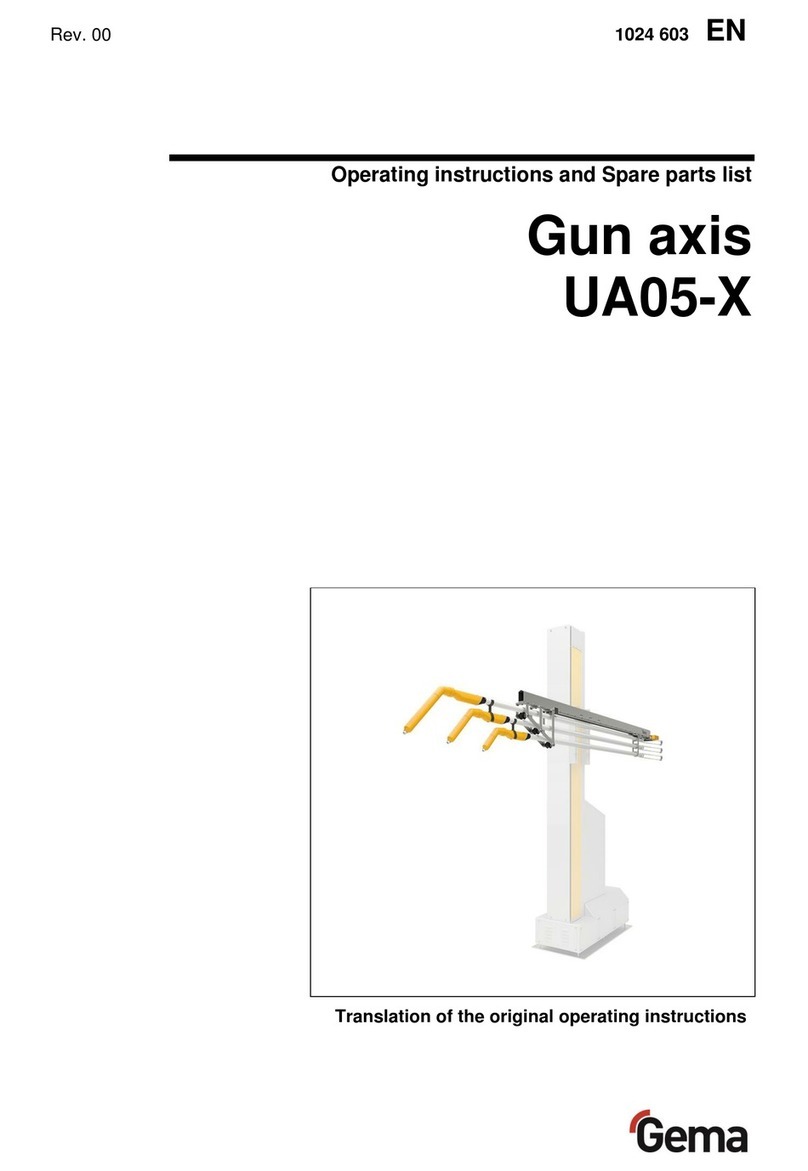
Gema
Gema UA05-X Operating instructions and spare parts list

Flex-A-Seal
Flex-A-Seal 63 Installation, operation, maintenance guide
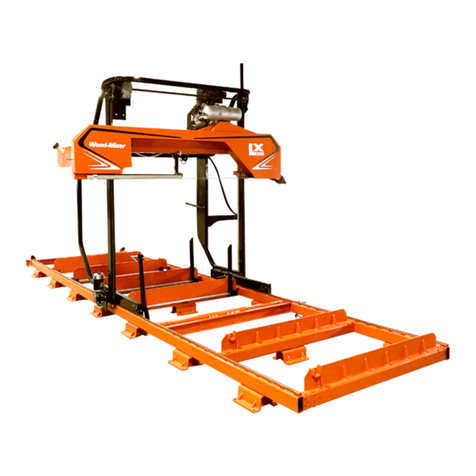
woodmizer
woodmizer LX250 Safety, Setup, Operation & Maintenance Manual
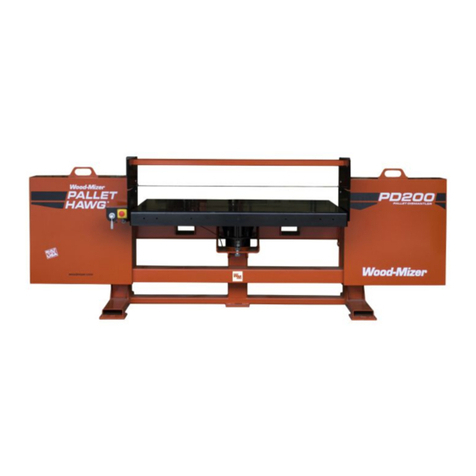
woodmizer
woodmizer PD200G19-S Safety, Operation, Maintenance & Parts Manual
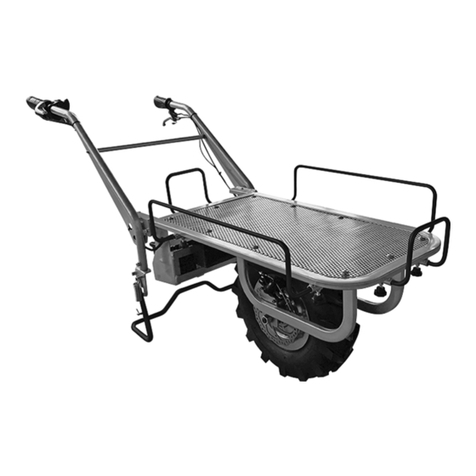
Power Fist
Power Fist 8825788 user manual
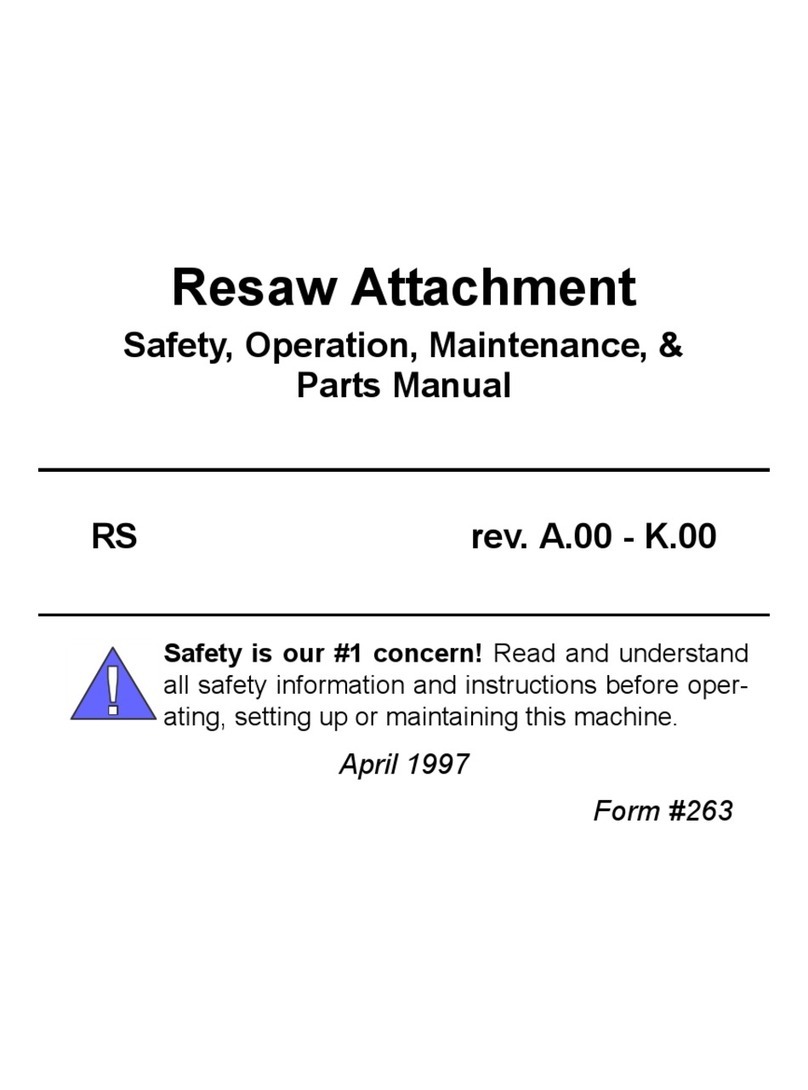
woodmizer
woodmizer RS Safety, Operation & Maintenance


